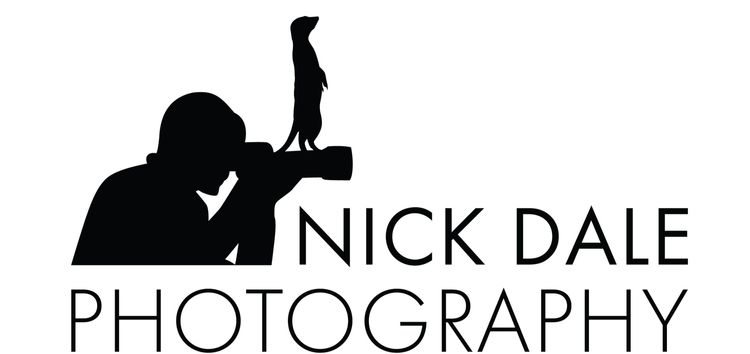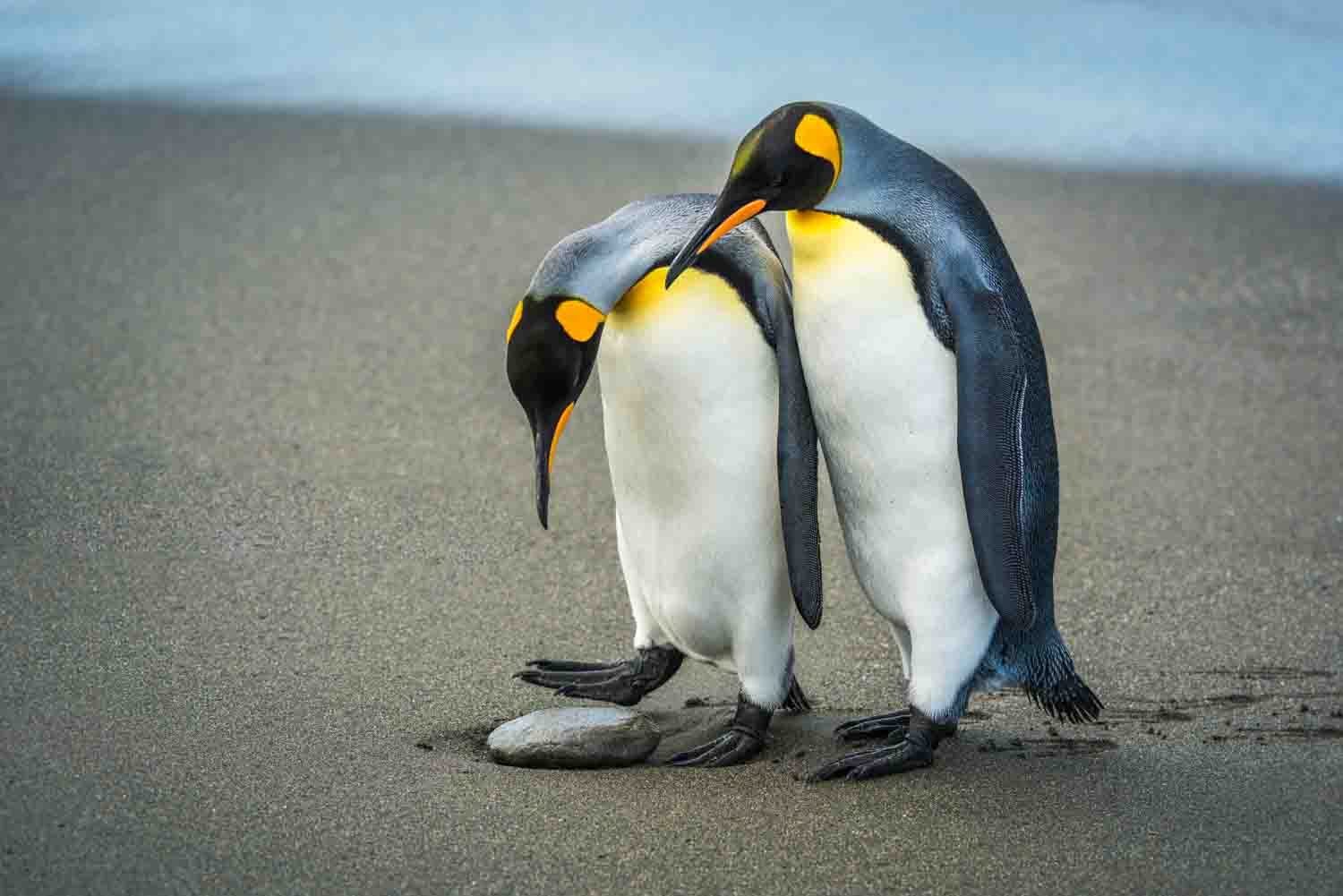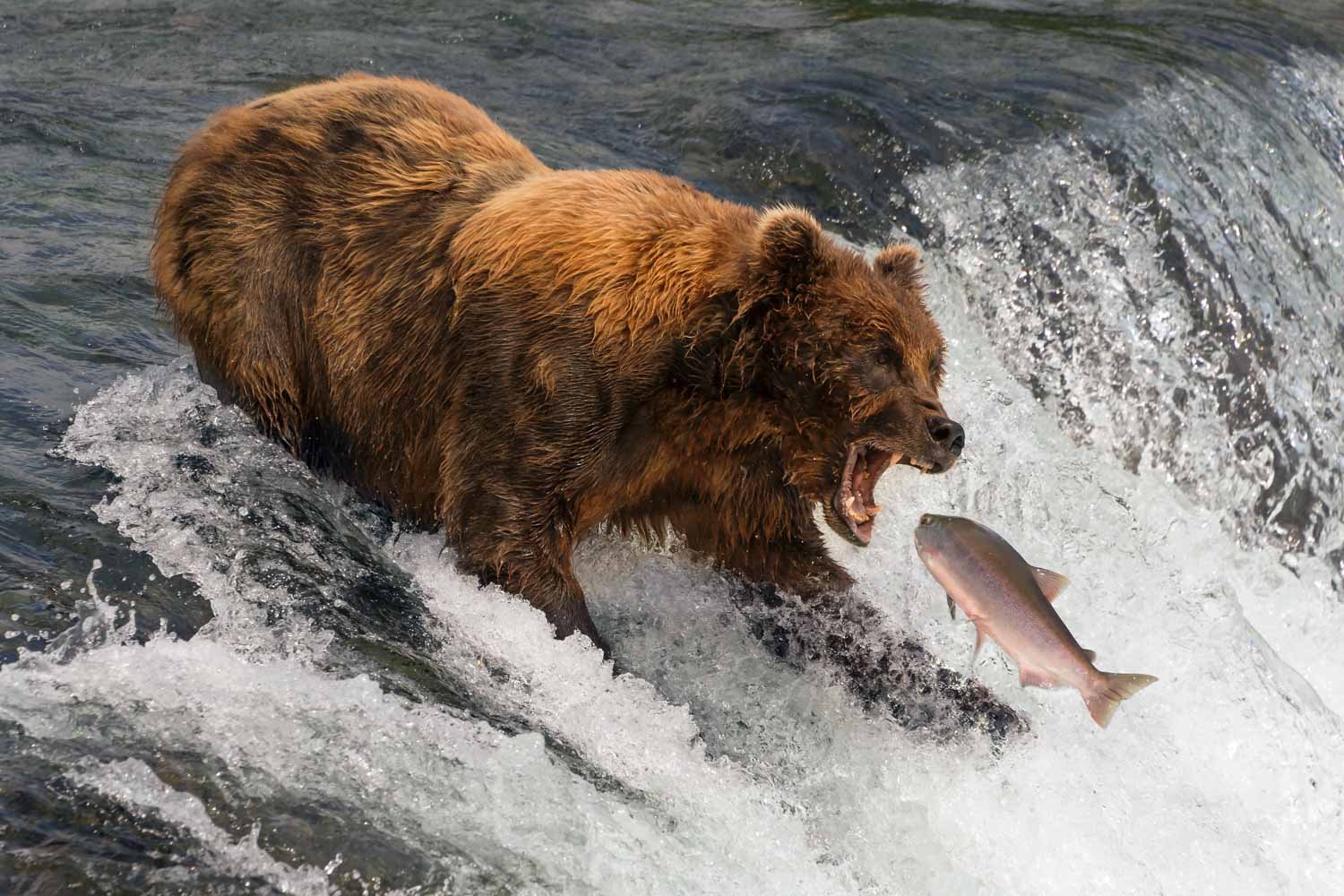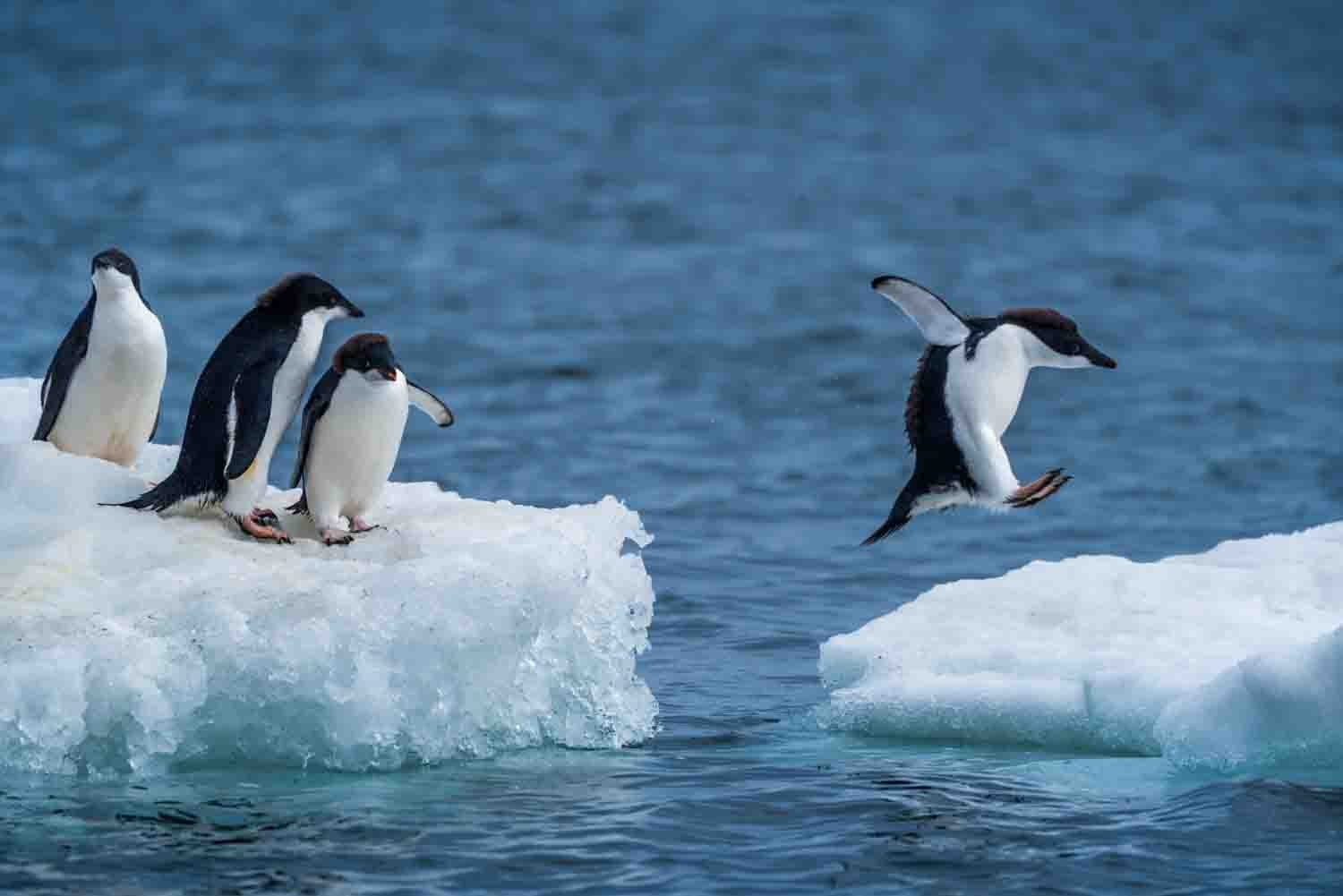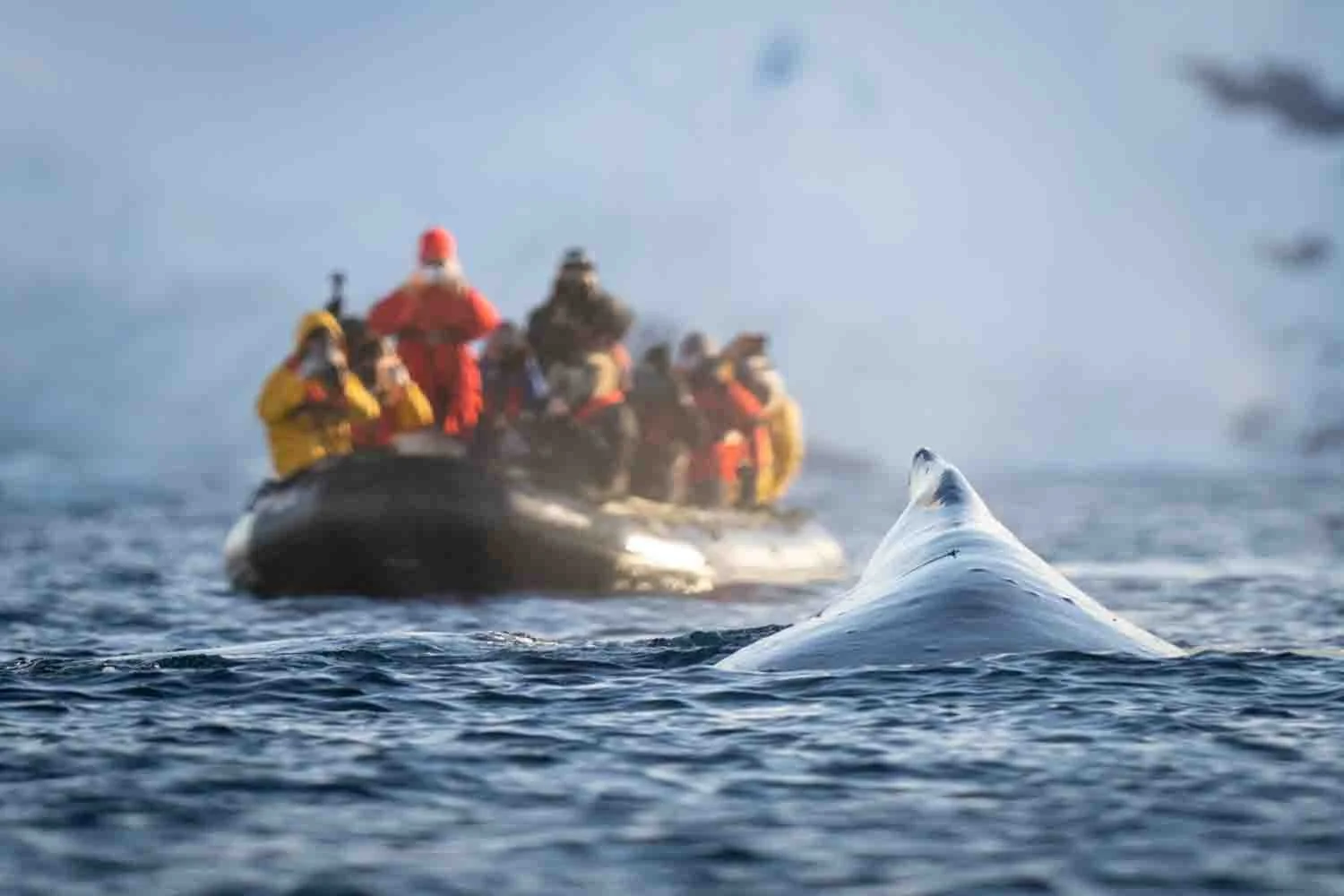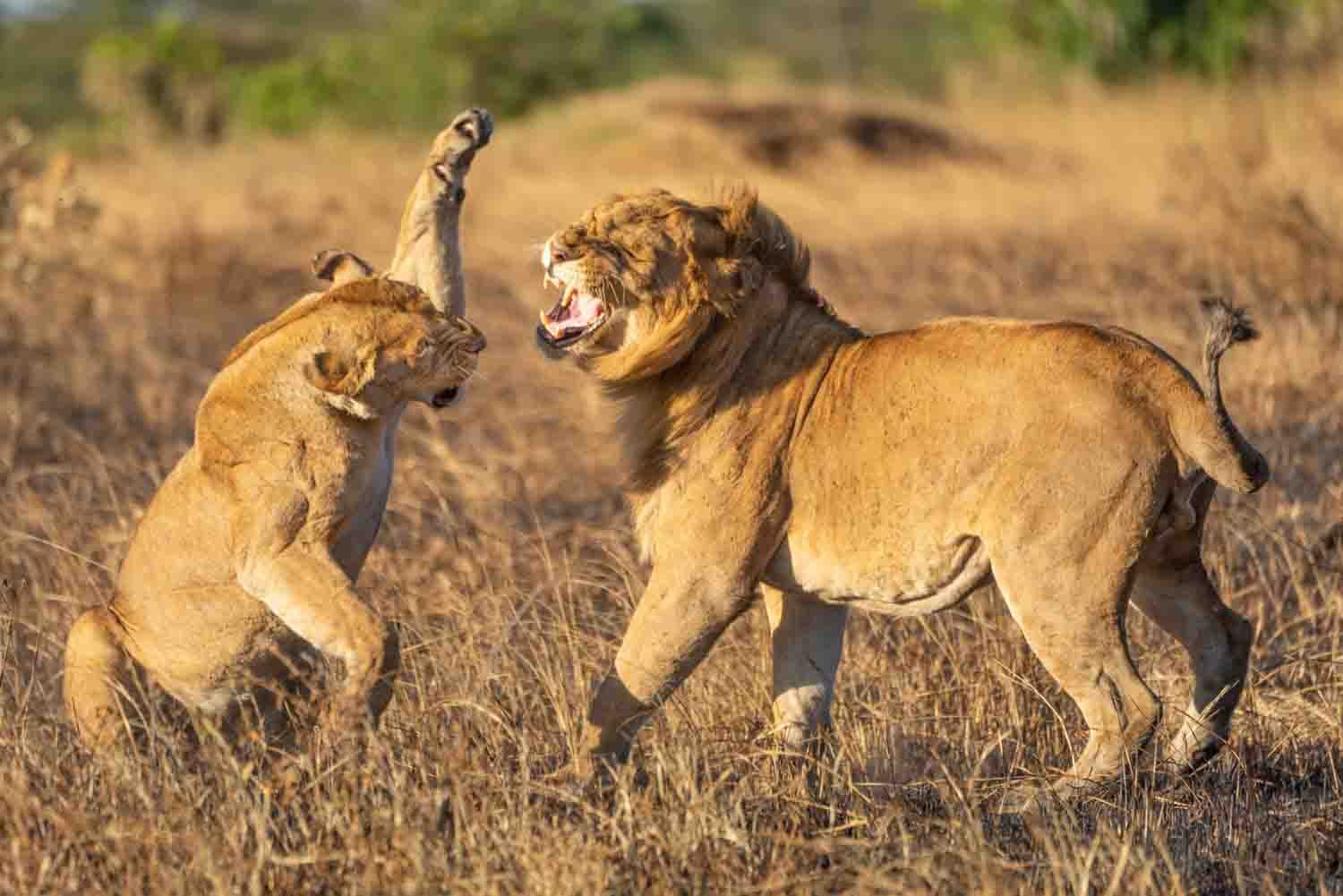Can you tell a story with just one picture?
It annoys me when signs at the Wildlife Photographer of the Year exhibition tell me that photographs should ‘tell a story’. How, exactly?! Even if it were possible to write a story based on one of my pictures, it would probably sound like it was written by a 10-year-old!
Take this image of a leopard stretching, for example. What would the ‘story’ be?
“A leopard stretches.”
“A leopard stretches on a rocky ledge.”
“A leopard stretches on a rocky ledge between bushes.”
I’m no Tolstoy, but even I could do better than that!
Having said that, there are occasions when a ‘story’ really does play out, and it’s the job of the wildlife photographer to capture that in one or more images.
When I first visited Antarctica, I saw two king penguins waddling up the beach towards me. When they were 20 yards away, they stopped at a small rock and started having a look at it. They spent a full 10 minutes examining it before one of them eventually persuaded the other to move on.
I obviously don’t know what the penguins were thinking or ‘saying’ to each other, but it seemed pretty likely that the female thought the rock was an egg and was accusing her mate of losing it or even abandoning it!
Meanwhile, her mate was patiently trying to explain to her what was really going on: "Come on, darling, it's just a rock..."
This photograph is the closest I’ve ever come to ‘telling a story’. Then again, maybe it was just my imagination playing tricks on me…!
What do They Really Mean?
I know that a picture’s supposed to be worth a thousand words, but I think talking about ‘telling a story’ is a bit of a stretch. So what do people really mean? Let’s have a look at a few possibilities.
“Describe a Situation”
This is the most likely definition of trying to ‘tell a story’. Describing a situation means illustrating what’s happening (or what’s just happened or what’s about to happen). It might be a portrait or an action shot, but it has to answer the question: “What’s going on here?”
In the picture below, the answer is obviously that a brown bear is catching a salmon in its mouth on a waterfall…!
“Reveal Character”
Sometimes, the ‘story’ is more about character or personality. When I occasionally submit my images for a critique, the other photographer usually praises the pictures that show the animals’ personality, and I get advised to do more like that.
Again, this might be a portrait or an action shot. The way an animal looks can often show something about its character or experiences (though not always).
If you wanted to portray the lion as the ‘King of the Jungle’, you could do worse than this portrait.
The same goes for an animal’s behaviour. This action shot of a jumping Adélie penguin was chosen as the cover image for an article on leadership in a management journal—and you can see why…!
“Show a Relationship”
Showing a relationship means making clear what it is and showing the emotion felt on both sides. There are a few key relationships in the animal world:
Male and female
Parent and child (usually the mother!)
Predator and prey
Sibling rivalry
Parasite and host
etc, etc…
A photograph can become more powerful if it illustrates one of these powerful relationships and demonstrates the feelings involved by showing the animal’s expression or behaviour.
In this shot of a cheetah hunting a Thomson’s gazelle, it’s pretty clear what the relationship is…!
However, you can also juxtapose humans and the natural world. The last time I was in Antarctica, I took this shot of a humpback whale surfacing beside a Zodiac full of photographers. The relationship here is not exactly ‘predator and prey’, but it’s close…!
“Capture the Action”
Sometimes, you don’t need to do anything more than capture the action. Just show something dramatic happening—whatever it happens to be!
I always think being a wildlife photographer is a bit like being a soldier: it’s 99% boredom and 1% panic! That 1% is obviously what people want to see. They don’t want to be bothered with all the research and the travel and the waiting and the expense and the effort. All they want to see is the ‘decisive moment’—like this elephant giving itself a dust bath on the Chobe river in Botswana.
“Show Emotion”
I’m a great believer in ‘selling the sizzle’—in other words, trying to make an emotional appeal with my images. However, there are always two sides to this: what the animal feels and what the viewer feels. A lion might hungrily rip up the carcase of a buffalo, but someone seeing a photograph of that might feel shock or even revulsion.
If there are two animals involved, there might even be more than one emotion on display. In this shot of a lioness slapping a male lion after mating with him, you can easily see that she’s on offence and he’s on defence…!
“Capture a Location”
We all have our dream destinations. Some we’ve already visited and have fond memories of, some we’ve yet to see. If you want to capture the essence of a location (or perhaps its ‘magic’), then you could do worse than taking an environmental portrait. This is when the subject is relatively small in the frame, which means you devote far more space to showing off the location and the ambience.
In this shot of a cheetah jumping down from a tree, the cheetah, the acacia and the flat grassland sum up a well-known and much-loved aspect of the Serengeti National Park in Tanzania.
“Capture a Moment”
There are special moments in time as well as particular destinations. It might be a time of year or a time of day, but, again, it has to capture the essence of the moment. Sunsets are a good example. They are symbolic of the end of the day, and they bring with them colourful skies that suggest relaxation, sadness, beauty and a host of other emotions.
I took this photograph of a blue wildebeest silhouetted against the setting sun at Kicheche Bush Camp in the Masai Mara, and it’s one of my favourite sunset shots.
Conclusion
So where does all that leave us?
Well, even though I wouldn’t talk about ‘telling a story’, I certainly approve of the idea of capturing situations, character, relationships, action, emotion, location and moments. They can all be very special, and it’s the wildlife photographer’s job to package them up in images that are as beautiful and compelling as possible.
If you’d like to order a framed print of one of my wildlife photographs, please visit the Prints page.
If you’d like to book a lesson or order an online photography course, please visit my Lessons and Courses pages.
